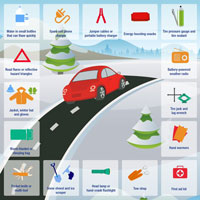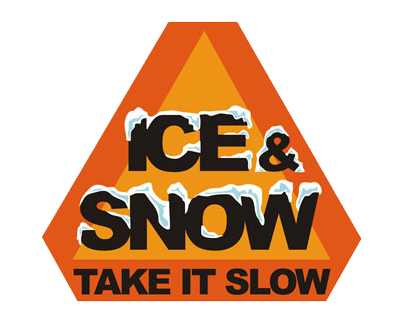Winter Driving Tips
Winter Emergency Car Kit

Click above to view the full Emergency Kit
Click here to download the PDF
-
Avoid any sudden or excessive actions while steering, braking or accelerating so you don't lose control.
-
Take it slow in ice and snow!
- Stopping on snow or ice without skidding requires extra time and distance. Drive slowly – below posted speed limits - so you can adjust to the conditions. This is especially true at intersections, off ramps, bridges and shady areas where black ice can form without being noticed.
-
Don't turn your four-wheel drive into an “off-road” vehicle!
- Four-wheel drive may help you get going faster but it doesn't help you stop sooner or maintain control better once you lose traction. Take it slow!
-
Allow extra room between vehicles.
- Longer stopping distances and extra time are required during winter conditions to avoid chain reaction crashes.
-
Don't take chances when pulling out in front of approaching vehicles.
- Remember, when the pavement is wet, you may not be able to slow down and they may not be able to accelerate as quickly as you would on dry pavement.
-
Avoid using cruise control.
- You need to be in full control when road conditions are wet or icy. Don't let your cruise control make a bad decision for you.
-
Brake early, brake slowly, brake correctly and never slam on the brakes.
- If you have anti-lock brakes, press the pedal down firmly and hold it. If you don't have anti-lock brakes, gently pump the pedal.
-
Stay alert!
- Beware of what's going on well ahead of you. Other vehicles can alert you to problem spots on the road which may give you the split second you need to avoid a crash. Needless to say, you can't be alert if you're on the phone so don't let yourself get distracted.

